Shop sim racing equipment
For many, Grand Theft Auto IV is the pinnacle of Rockstar Games’ long-running action-adventure series.
Set in a grimy facsimile of New York, GTA IV is often seen as the gritty maverick of its more light-hearted brethren, focusing on the exploits of Serbian immigrant Niko Bellic as he comes to terms with his role in the Balkan Wars.
The visuals are smeared in a dull beige hue, with the game’s intro juxtaposing Liberty City’s cold realism against the bright lights of ‘The American Dream’.
Released in 2008 on PlayStation 3 and Xbox 360, it would later gain a buggy Games For Windows Live PC release, which has thankfully since been superseded by Steam and Rockstar Launcher versions.
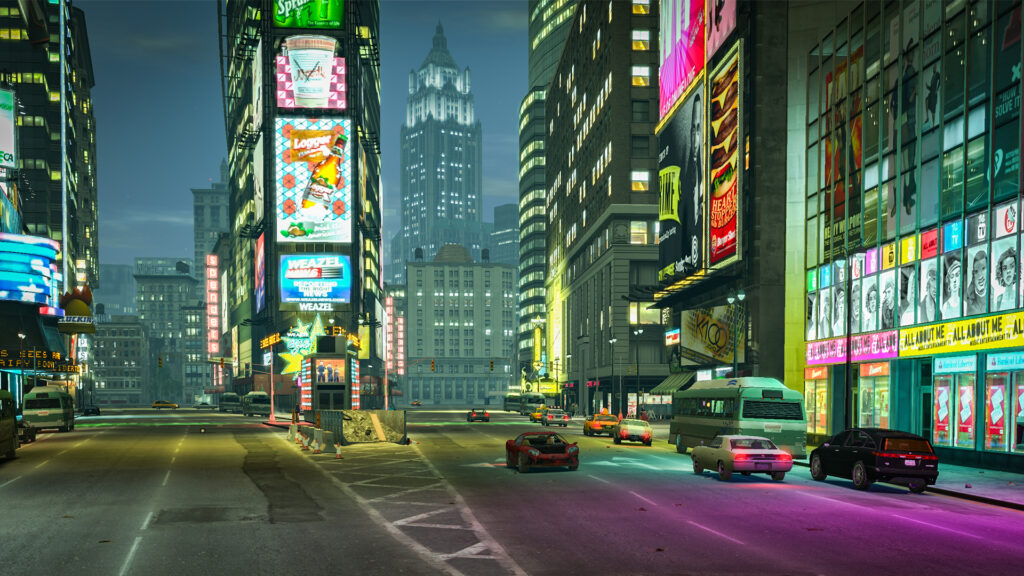
Too real?
Realism is what sets GTA IV apart from other entries in the series, with Rockstar’s proprietary RAGE engine, combined with the Euphoria physics plugin (created by NaturalMotion), helping produce a living, breathing city.
From the way criminals limply rag-doll when pushed down stairs, to how you can pick up objects off the street and throw them at enraged police officers, GTA IV constantly reminds you that every in-game action has an equal and opposite reaction. Physics, innit?
But for me, the game’s recipe for success is completed by its visceral vehicle handling, adding a dash of secret sauce to the Rockstar North-developed title. So much so that I’ve returned to Liberty City for second helpings over the last 16 years, completing the game at least three times.
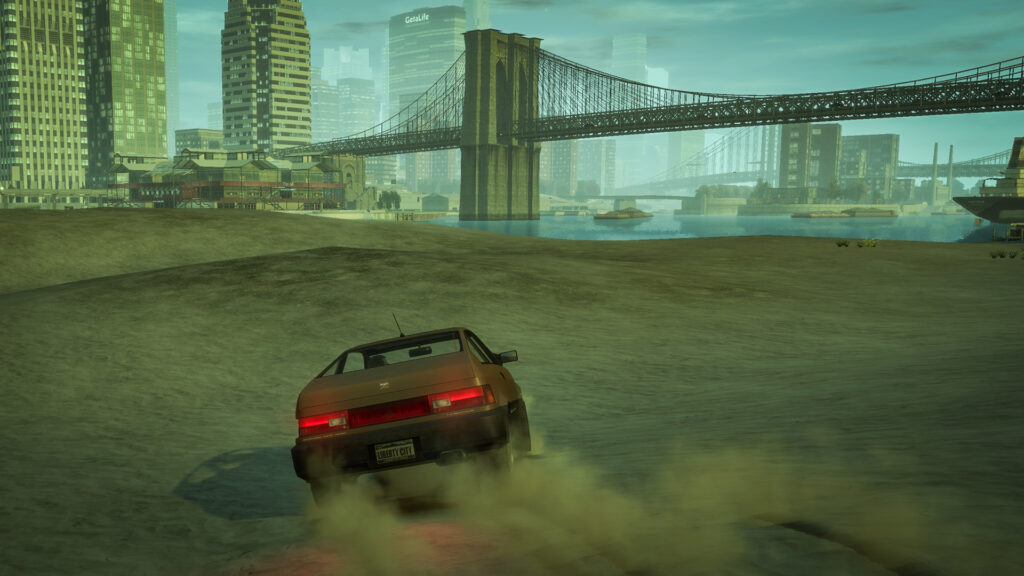
License to kill
The cars of GTA IV are all unlicensed, which is understandable given the nefarious activities you’ll be up to during a playthrough. After all, which manufacturer would want to be associated with crime? (The obvious exception is the PlayStation 2’s The Getaway, which has a fully licensed car roster despite its gangster-based storyline).
However, the in-game vehicles are mostly recognisable replicas of their real-world equivalents. Take the Vapid Huntley Sport, for example. It looks uncannily like the L322 Range Rover, possibly the most handsome version of the utilitarian luxury SUV.
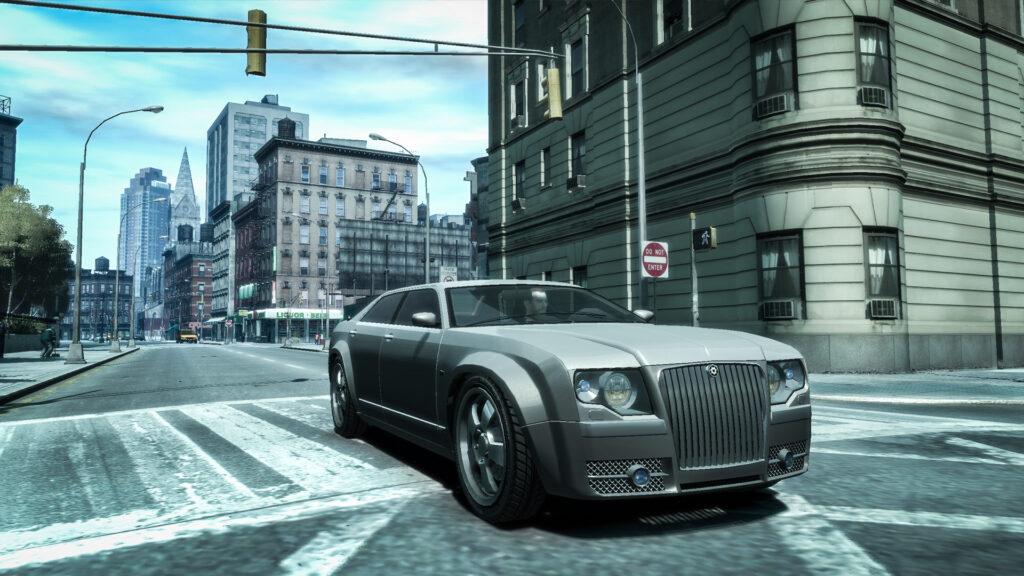
Other notable examples include the Bravado Banshee (Dodge Viper), Pegassi Infernus (Lamborghini Murcielago) and Pfister Comet (Porsche 911 Turbo). My favourite is perhaps the Dinkus Blista Compact, which lovingly evokes the front-wheel-drive understeery madness of a tuned Honda CR-X.
There are just under 120 cars and motorcycles to sample in GTA IV, with each car class behaving as you’d expect. A rear-engined, rear-drive Comet feels very different to the front-engined, front-drive Blista, for example, with lumbering saloons like the Schyster PMP 600 (Chrysler 300C) displaying boat-like levels of body roll.
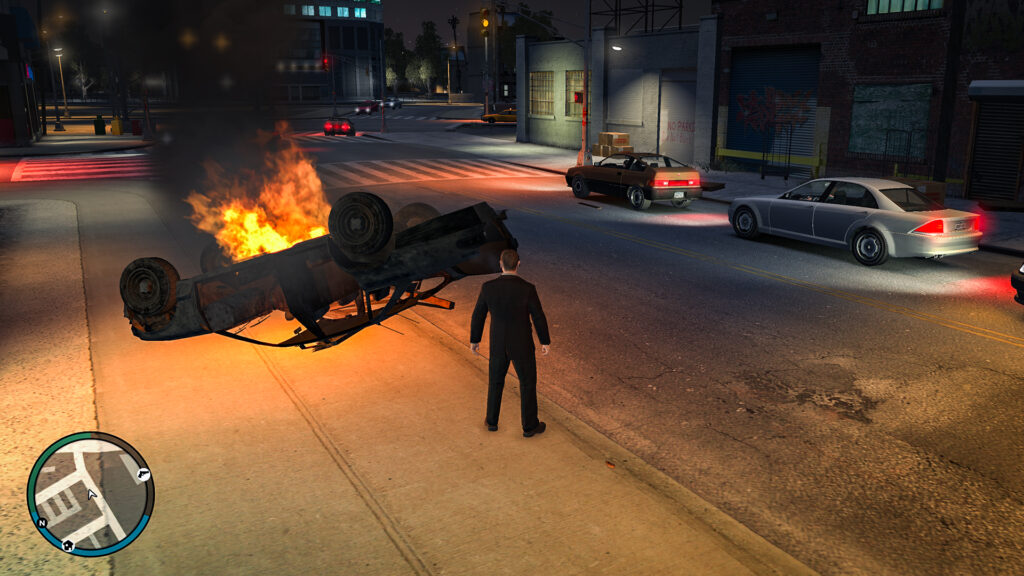
Hey Niko, let’s go (car) bowling
On the subject of body roll, suspension softness is exaggerated in GTA IV, with SUVs leaning worse than Niko after a heavy session with the McRearys, but the way most road vehicles tend towards understeer is at least believably realistic.
If you jumped straight from GTA V to GTA IV, you’d receive quite a shock when getting behind the wheel for the first time. GTA V’s cars are certainly much more forgiving, but they’re also less detailed in terms of their physics and damage models.
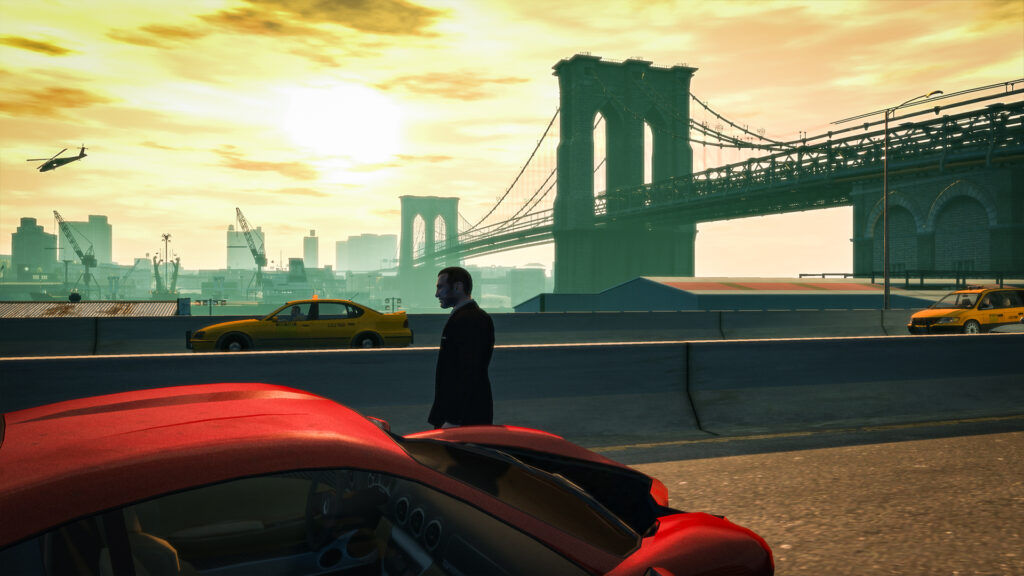
Does this make them more immediately fun to drive? Perhaps, yes, for the majority of players. But for those who love sim racing, GTA IV’s vehicles possess a depth to their handling that satisfies the urge for a driving challenge. At least it does for me, anyway.
Braking in a straight line is more effective, for example, while loading up the suspension before a corner achieves better results than simply barrelling in at top speed. GTA IV rewards those who can read the road and plan their next move early.
Damage
If you take a baseball bat to a car in GTA V, you’ll leave some scratches. Do the same in GTA IV and you can dent panels.
The damage model is more exaggerated in GTA IV, with cars becoming disfigured by high-speed crashes (although bumpers weirdly remain attached no matter what). It feels like Rockstar had to simplify its vehicle physics and damage model to help San Andreas’s huge environment run smoothly.
Cars also noticeably slow down when damaged in GTA IV, with the game’s realistic inertia model meaning it’s far quicker to travel to an objective (like to a bowling alley with Roman) by considering every move you make carefully.
Scanning the road ahead for a break in traffic is vital, as blundering through a confined area will almost certainly result in a jam. There are consequences for poor driving, something you don’t often see in open-world games.
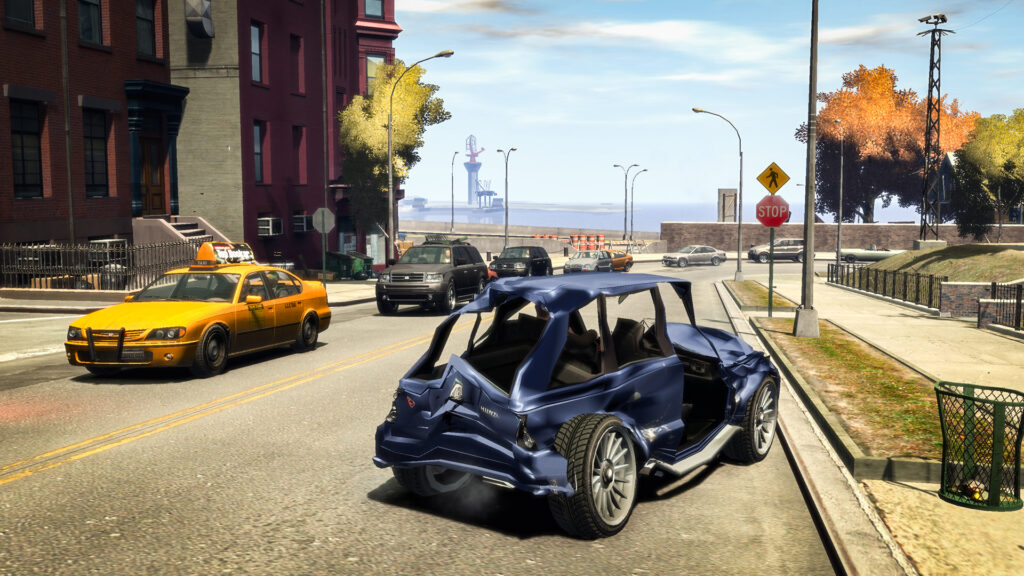
PIT stop
In GTA IV, it feels like the police are following the same physics rule book as the player. They make mistakes and find themselves barrel-rolling off an intersection, making every car chase potentially exciting.
They attempt subtle PIT manoeuvres or try to box the player’s car in, just as they would in real life. GTA V’s police vehicles, on the other hand, are artificially enhanced to hunt you down quicker at higher wanted levels.
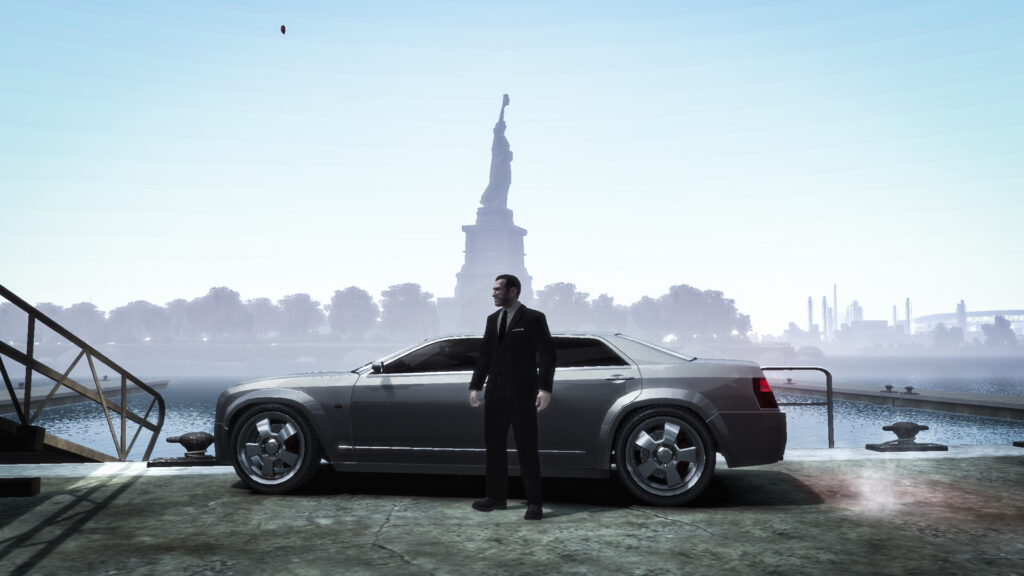
Life is complicated
GTA IV’s driving model isn’t perfect, obviously. Cars have way too much body roll, for example, and could perhaps be a little more forgiving to drive on the limit (and its motorcycles aren’t as intuitive to control as its cars).
But that’s one reason I love it so much: it’s difficult to drive a car well. This makes it all the more satisfying when you do pull off an exquisite drift, or weave in between traffic at ludicrous speeds to evade the Liberty City Police Department.
The game’s RAGE engine allows all manner of natural-looking crashes and creates moments of hilarity when the unexpected happens, enhanced by GTA IV’s incredible Euphoria physics.
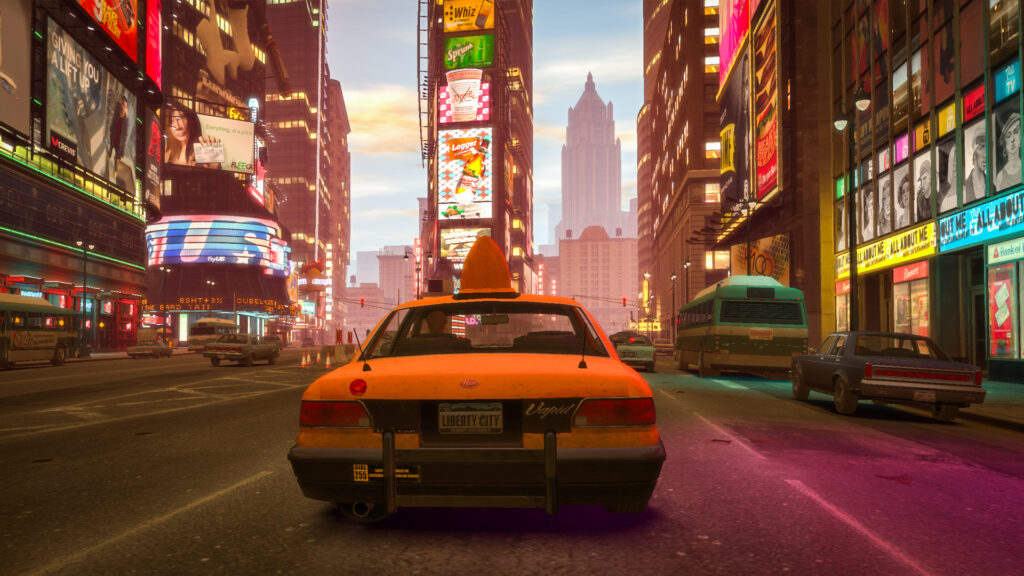
One such occasion saw me pull up outside my safe house. My character opened the car door, got out, and a passing motorcycle comically whipped the door out of my avatar’s hand.
Another moment saw me drive a taxi into a wall. The Taxi’s topper slid off its roof and whizzed directly into an innocent bystander’s head, knocking him over.
With physics-inspired moments like this, It’s no wonder that GTA IV is the third-highest-ranked game ever on Metacritic.
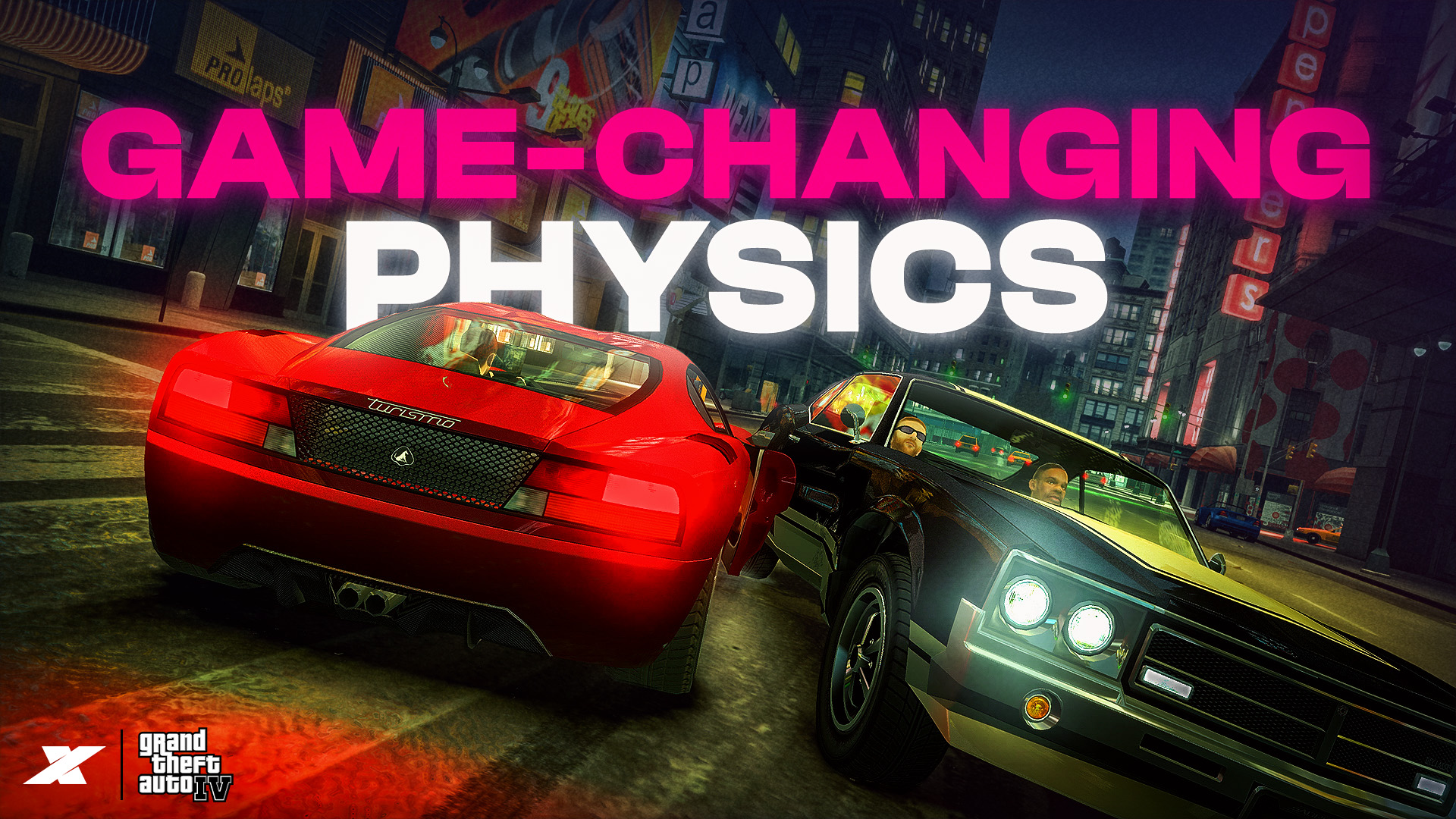




Chat with the Community
Sign Up To CommentIt's completely Free
… [Trackback]
[…] Read More: traxion.gg/how-grand-theft-auto-iv-broke-the-open-world-mould-for-vehicle-physics/trackback/ […]